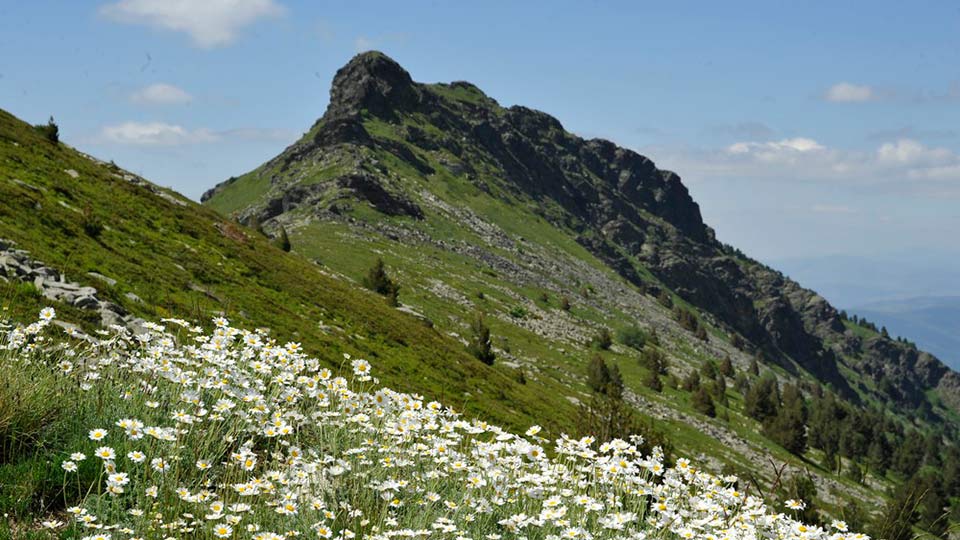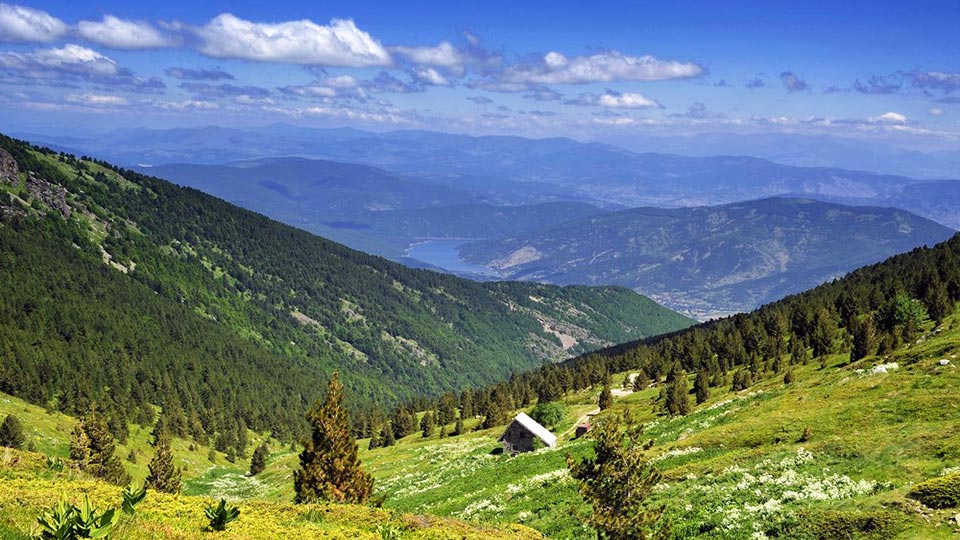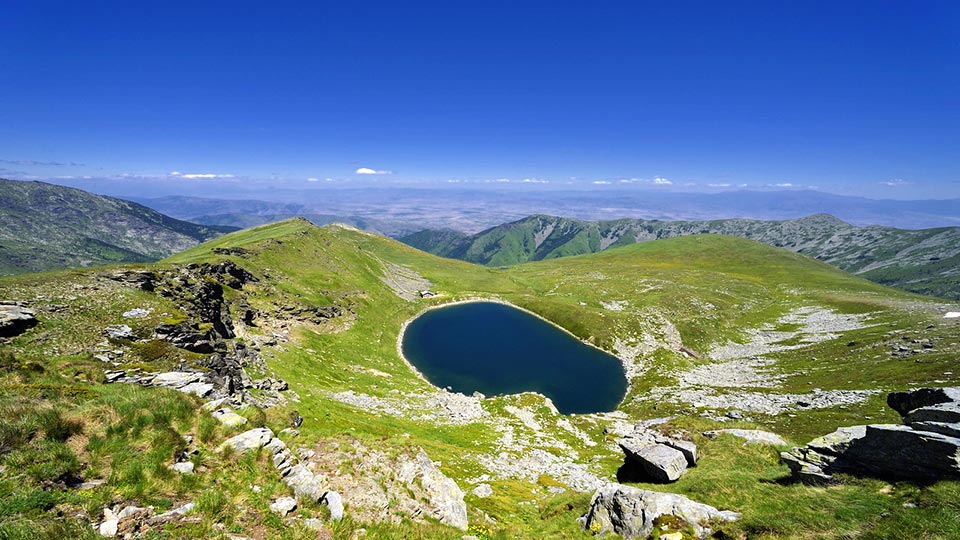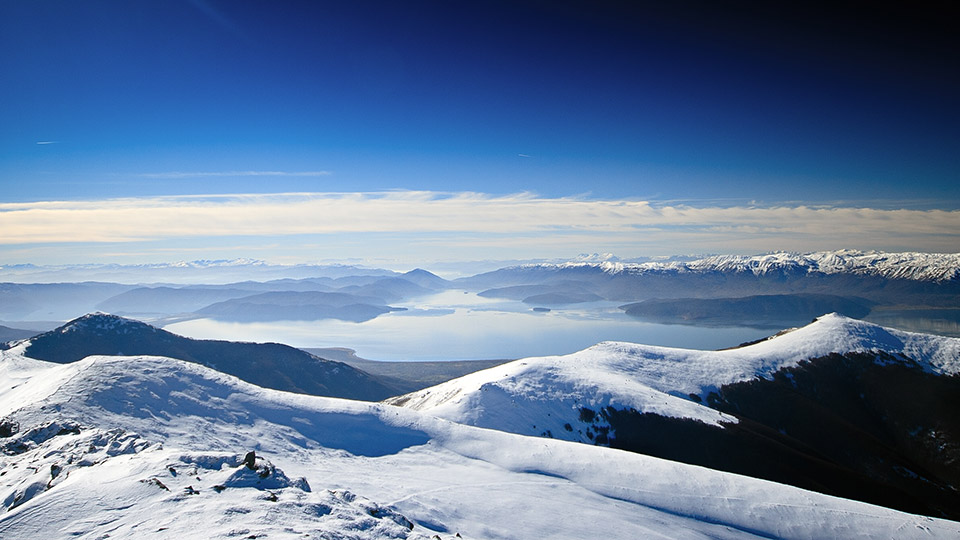History of the National Park Pelister
The National Park Pelister, with its richness, diversity and colour, is one of the most significant values of the biological diversity of the mountain Baba and attracts the interest of the researchers, visitors and lovers of the oldest and one of the most beautiful national parks in the Republic of Macedonia. It is the first declared national park on the territory of the Republic of Macedonia. It was declared a national park Pelister in 1947. The area of this national park is 17,150 hectares.
Where is the National Park Pelister located?
The National Park Pelister is located between the Prespa Valley and the Pelagonija valley. It is located in the southwestern part of the country, on the northern slope of Mountain Baba. The park was named after the highest peak of the mountain - the peak Pelister with an altitude of 2,601 metres. Otherwise, Baba is the most southern mountain with alpine characteristics on the Balkans. Although it occupies such a high mountainous area, the national park Pelister is fairly accessible, and from Bitola to its locality Kopanki there are about 15 km.

The natural values of the National Park Pelister
In a tectonic sense, Pelister is a horst, which has a double significance from a tourist viewpoint. It is a remarkable educational example in a geomorphological sense, so visitors can learn a lot. Tourist significance is also reflected in the fact that this typical horst is a dominant sight, from which magnificent panoramas are extending. The view extends reaching up to the Jakupica Mountain in the north, the Selecka Mountain and Kajmakcalan in the east and towards the Prespa Lake, the Galicica Mountain and the Jablanica Mountain to the northwest. As if it was on the palm of your hand you can observe the Pelagonia Plain and enjoy the colours of Prespa Lake.
Flora in the National Park Pelister
Mountain vegetation is extraordinary and extremely rich, and the flora is diverse. The value of National Park Pelister, however, is based on the remarkable and specific biogeographical heritage. In this context, the diversity of the plant life is particularly stressed. Pelister is said to be a "natural arboretum". About 88 wooden plants, which are classified in 23 families, representing 29 percent of the total dendroflora in the Republic of Macedonia grow on this mountain.

Fife-needle pine MOLIKA
The greatest value of the wood trees is given to the Molika, which is an indigenous pine tree with a tertiary age, which grows up to 40 metres. The greatest credit for obtaining the status of a National Park Pelister is precisely given to the five-needle pine MOLIKA - which was discovered by the German botanist August Griesebach in 1839. Pelister has Molika trees that are older than 230 years. The Molika is the most common, the most widespread and the most important plant form in the national park Pelister. It is a very beautiful forest that has excellent recreational properties, but also a forest that has an endemic nature and, in that context, it has distinctive rare attractive touristic properties. The Molika is actually an indigenous five-needle pine with tertiary age. As a relic type, the Molika is a phenomenon on the Balkan Peninsula.
Fauna in the National Park Pelister
Such extraordinary forests and other floral elements hide a great variety of fauna in them. From the tourist point of view, the species of high and low game are important. Almost all major species are represented in this national park. The most spectacular species in this belt is the Balkan wide goat (Rupicapra balcanica). The hunting in the most of the national park is completely prohibited, so the eastern slope of Mount Baba is identified as a hunting zone. Pelister is accepted in the preliminary list for inclusion in the UNESCO list.
Hydrographic values of the National Park Pelister
Pelister is characterized by numerous springs and quite constant and occasional watercourses. Among the watercourses, the mountain rivers deserve a special place: Sapuncica, Crvena Reka, Semnica, Vrtuska, Brajcinska and other. These rivers make the landscape more attractive, and the appearance of fish in them opens the possibility of wider recreational and touristic content of the national park Pelister.
Glacial lakes, the Big and the Small Lake
Both glacial lakes, the Big and the Small Lake, known as Pelister's Eyes, are two kilometres apart and are a great place to rest. In the Pelister lakes lives the endemic Pelister spring trout (Salmo trutta peristericus) and the Pelagonija spring trout (Salmo trutta pelagonicus).
From the invertebrate organisms, a lush population of the fairy shrimp Chirocephalus diaphanus carinatus, a Balkan relict-endemic taxon, is encountered in the small glacial lake "Small Lake". The amphipod shrimp Niphragus pancici peristericus, a pelister endemit, has been found in the great glacial lake "Big Lake", which has been registered only in this lake so far. Only in the waters of these two glacial lakes, lives the harpacticoid shrimp Arcticocampus macedonicus, a Pelister endemic species.

Climatic conditions of the National Park Pelister
The climatic conditions on Pelister are very favourable. The climate is characterized by moderation both in the winter period of the year and in the summer period. The average July temperature is 18.4 ° C, which indicates a very pleasant recreational value. The average January temperature is -2.6 ° C.
Tourist facilities in the National Park Pelister
The Mountain Baba, considered the most agreeable in Macedonia, offers pleasure and enjoyment for everyone. The landscape is surrounded by beautiful hiking, climbing and sports fields, and it is a challenge to get to know in each season. The terrain is rich in natural phenomena, unusual structural features and specific geological construction, such as stone rivers and seas, sharp rocky cliffs, stone rings, grassy terraces, etc.
Pedestrian and bicycle trails in the National Park Pelister
Information on pedestrian and bicycle trails and activities in the National Park Pelister can be found on the official website and at the Info Centre.
The most characteristic paths are::
- Bicycle and hiking trail to the top Pelister
- A historic trail or trail for the First World War
- The trail along the stony area is an educational - demonstration trail, which leads the visitors of the National Park Pelister through a very attractive area filled with various natural beauties. Along the trail there are spacious forests of Molika, rare and endemic flora and various types of landscape forms ...
- The National Park Pelister provides children's resorts and children's educational tours
- The Mountaineering house - Kopanki and Mountain Home - Dimitar Ilievski Murato are located on the National Park Pelsiter
Skiing in the National Park Pelister
Snow in some places on this mountain can remain until July. If you are fond of skiing or the beautiful winter landscapes, then you must come to Pelister and get warm with the mountain tea growing on this mountain.

Attractions in the region of the National Park Pelister
The activities and additional attractions in the region of the National Park Pelister and the City of Bitola can be interesting both for the younger and the older generation. For more information, you can check the following links:
- www.visitbitola.info
- www.bitolatourist.info
- The site of the ancient city - Heraclea Linkestis, founded by Philip II, the father of Aleksandar Makedonski (Alexander the Great), www.bitolamuseum.org
- Memorial room of Kemal Ataturk
- Ethno Museum of Jone Evtimovski in the village Podmocani - Resen
- Collection of rarities Philip in the village of Krklino - Bitola
